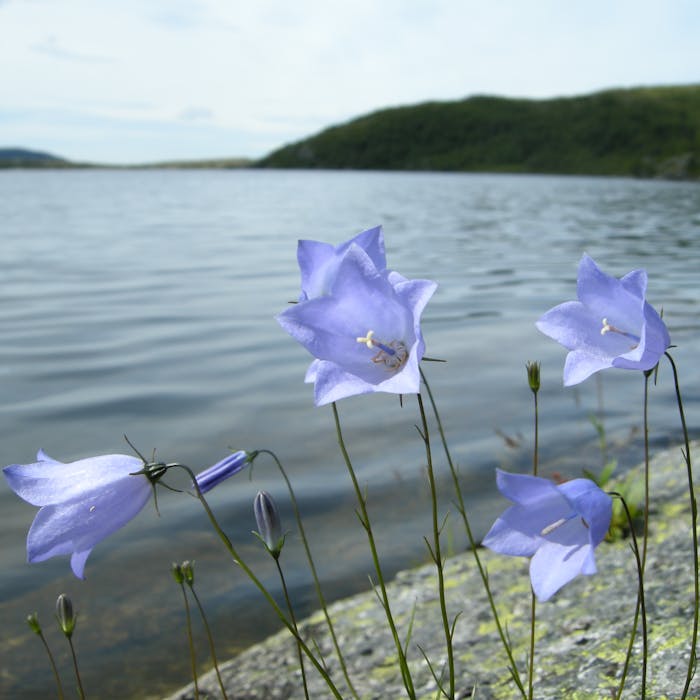
Harebell - the Scottish bluebell
Often called the bluebell of Scotland, the delicate, papery blue bells of the harebell are a summer delight of grasslands, sand dunes, hedgerows and cliffs.
The harebell (Campanula rotundifolia) is found throughout the UK, but its ability to grow in dry, nutrient-poor grasslands and heaths, and preference for lower temperatures, has made it a prominent wild flower of Scotland. The plant often successfully colonises cracks in walls or cliff faces and stable dunes.
It flowers in late summer and autumn, usually up to the first frosts, and each plant spreads to form a small clump through the production of underground rhizomes. It doesn't do well if there is too much competition with other plants, hence its preference for less fertile soil. It doesn't mind either acidic or chalky soils, but hates damp soils.
It is regularly visited by bumblebees and honeybees, providing an autumnal source of nectar for these insects.
Harebells were associated with witchcraft and fairy folk. It is said that the ringing of the Harebells summons the fairy folk to their gatherings. Harebells were believed to grow in areas frequented by hares, and witches were commonly thought to be able to turn themselves into hares.
Further reading
Links to external websites are not maintained by Bite Sized Britain. They are provided to give users access to additional information. Bite Sized Britain is not responsible for the content of these external websites.
